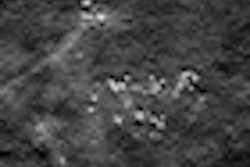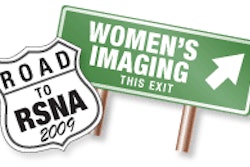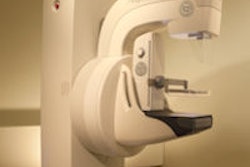CHICAGO - Digital breast tomosynthesis (DBT), when combined with a patient's digital mammography priors, can reduce the screening false-positive rate by 41%, according to a study presented Monday at the RSNA annual meeting.
Dr. Daniel Kopans of Massachusetts General Hospital in Boston and colleagues assessed the rate of callbacks (and, thus, false positives) with a DBT unit in a typical clinical screening setting. The study used a work-in-progress DBT prototype, Senographe DS DBT (GE Healthcare, Chalfont St. Giles, U.K.), and included 2,764 women. Each participant was randomly assigned to receive either DBT or digital mammography first, but all received both, for a total of 2,971 DBT/digital mammography exam pairs.
"Our study hypothesis was that DBT can be used to reduce the callback rate," Kopans said.
Exam combinations included digital mammography with and without comparison to prior mammography studies and DBT exams with and without comparison to prior mammography studies.
DBT with priors had the lowest false-positive rate, Kopans' team found. Out of the 2,971 exam pairs, callback rates were as follows:
- DBT, without conventional mammography priors: 312 or 10.5%
- Digital mammography, without priors: 384 or 12.9%
- DBT, with conventional mammography priors: 137 or 4.6%
- Digital mammography, with priors: 233 or 7.8%
"When used in a clinical screening setting, with access to prior conventional mammography images, DBT reduced the callback rate from 7.8% to 4.6%, producing a 41% reduction in the false-positive rate," Kopans said.
In response to questions from session attendees, Kopans said that the study did not explore DBT's sensitivity or what particular factors led to callbacks with either modality.
"We are going to track all the women with a one-year follow-up to identify the total cancers found in the study population," he said.
Priorities, priorities
Reducing callbacks in screening mammography is important. But not at the expense of mortality rates, Kopans said, criticizing the U.S. Preventive Services Task Force's (USPSTF) recent recommendation that women start mammography screening after 50 years of age and also be screened biennially.
"It's an unfortunate irony that last week the USPSTF completely ignored data that show the death rate of breast cancer has been reduced by 30% since 1990, due to screening programs, and decided that reducing false positives is more important than saving lives," Kopans said. "[But it's true that reducing callbacks is a worthy goal], and DBT can do that."
By Kate Madden Yee
AuntMinnie.com staff writer
December 1, 2009
Related Reading
Digital breast tomosynthesis cuts recall rate by 30%, August 4, 2009
ECR delivers new findings on digital breast tomosynthesis, March 7, 2009
New breast imaging applications show diagnostic promise, January 20, 2009
Pilot study: DBT's role needs further research, April 18, 2008
ECR sessions examine DBT's effectiveness, March 7, 2008
Copyright © 2009 AuntMinnie.com



















